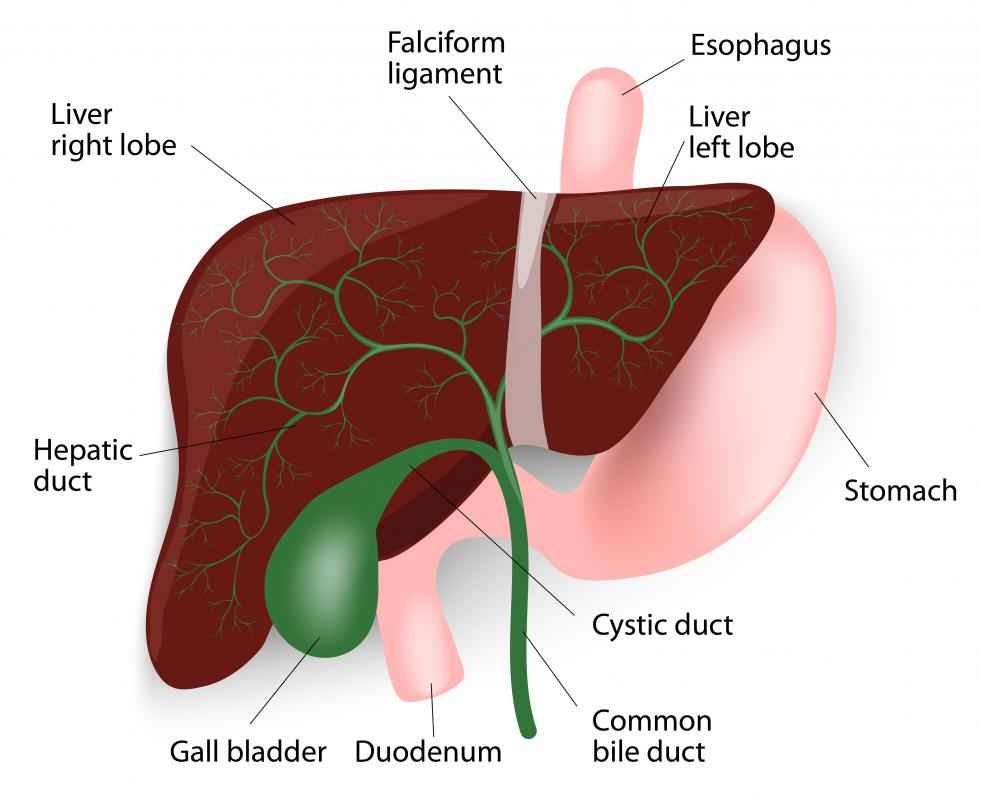At TheHealthBoard, we're committed to delivering accurate, trustworthy information. Our expert-authored content is rigorously fact-checked and sourced from credible authorities. Discover how we uphold the highest standards in providing you with reliable knowledge.
What Are the Intraperitoneal Organs?
Many of the discreet organs within the human torso are enveloped within a thin membrane, or skin-like tissue, called the peritoneum. They are collectively referred as the intraperitoneal organs. Most of them, such as the stomach, are digestive. The reproductive organs of the female anatomy are also intraperitoneal.
There are several purposes of the peritoneum membrane besides containing and protecting the organs within it. It secretes a viscous substance called serous fluid that fills the abdominal cavity. The organs are thus suspended, neutrally buoyant, in liquid which is enriched with proteins and nutrients. The fluid also serves as a lubricant, allowing the organs a degree of free movement or displacement. The membrane is backed by a layer of connective tissue, including blood vessels and nerves, that support the organs.

Peritoneum is derived from the Greek roots peri for “around or outer,” ton for “stretched,” and ium for “structure.” This is a structure that stretches around much of what’s commonly called the human viscera, its guts. It is a sac, and the interior space that it creates is the peritoneal cavity. Among the more prominent of the intraperitoneal organs are the stomach, liver and spleen.

Two, separated layers, of peritoneum can be defined. The outermost layer is called the parietal peritoneum, and an inner layer called the visceral peritoneum tightly wraps each of the intraperitoneal organs. Organs such as the kidneys and pancreas, if covered by visceral peritoneum but located outside of the parietal sac, are referred as retroperitoneal. Completely external organs such as the bladder are called infraperitoneal. One of their distinctions is that intraperitoneal organs have freedom of movement, whereas the other organs are more fixed in place.

Additionally, the peritoneal membranes create two separate cavities, referred as the greater and lesser sacs. The stomach is located within the former, and the latter lesser sac is attached to the stomach, draping down to enclose lower organs. A small section of the duodenum, which connects the stomach to the intestines, is infraperitoneal.
There is similar overlap with the intestines. Parts of the large intestine including the appendix and the upper one-third of the rectum tract, for example, are contained within the peritoneum. Most, but not all, of the small intestine are likewise considered intraperitoneal organs. The majority of the abdominal organs, in any case, are enclosed by a twin layer of visceral peritoneum, usually called its mesentery. Sandwiched between them are the organ’s primary nerves, blood vessels and other connective tissue.

The overlap of an organ being both intra- and infraperitoneal may be the simple result of embryonic development. Some organs, such as the kidneys, have a functional need to be outside of the parietal sac. Other organs, such as the heart, may have very different and specialized functions that require their own separate cavity enclosures. A woman’s inner reproductive structures — uterus, ovaries and Fallopian tubes — are all intraperitoneal organs.
AS FEATURED ON:
AS FEATURED ON:


















Discuss this Article
Post your comments